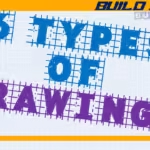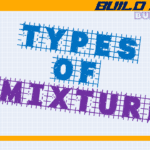Construction projects require precise planning, budgeting, and resource management. One of the most essential tools for this process is the Bill of Quantities (BOQ). The BOQ acts as a blueprint for estimating costs, defining the project scope, and ensuring accountability throughout the project lifecycle. A well-prepared BOQ is critical to project success, serving as the foundation for accurate cost estimation and effective financial management.
In my years working in construction management, I’ve witnessed firsthand the importance of a detailed and comprehensive BOQ. A well-executed BOQ not only prevents financial surprises but also enhances communication between all stakeholders involved in a project.
What is a Bill of Quantities (BOQ)?
The Bill of Quantities, or BOQ, is a document that itemizes the work involved in a construction project. It lists the materials, labor, and tasks required to complete the project, along with the associated quantities and unit costs. The BOQ provides a detailed breakdown of everything from excavation to final finishes, ensuring nothing is left out of the cost estimation process.
In simpler terms, the BOQ is like a shopping list for your construction project. It specifies the exact quantities of materials you need, the type of work to be done, and how much everything will cost. It serves as the basis for tendering, contracting, and managing costs throughout the construction phase.

Figure: BOQ analysis is essential for Construction Cost Estimate.
The Role of BOQ in Construction Cost Estimation
The primary role of the BOQ is to provide an accurate cost estimate for the construction project. Cost estimation is one of the most critical stages of project planning. Without a detailed BOQ, it’s easy for projects to run over budget, leading to disputes between contractors and clients.
From my experience, having a comprehensive BOQ helps to keep both costs and expectations clear from the start. It allows project managers to foresee where money will be spent, helping them allocate budgets effectively and avoid costly surprises during the execution phase.
The BOQ helps construction professionals:
- Forecast total project costs by providing detailed estimates of materials and labor.
- Maintain transparency in cost allocation, minimizing discrepancies during invoicing.
- Establish a benchmark for tracking project expenses, ensuring cost control throughout the project lifecycle.
BOQ Structure and Components
A well-organized BOQ follows a consistent structure, usually divided into several sections that correspond to different aspects of the project. Although the specific format of a BOQ may vary from one project to another, it typically contains the following components:
A. Item Descriptions
Each task or material required for the project is itemized in this section. The item descriptions should be clear, concise, and sufficiently detailed to ensure everyone understands the scope of work.
B. Quantities
Quantities refer to the amount of each material or work item required to complete the project. For example, how many cubic meters of concrete are needed for the foundation? The BOQ specifies these details, allowing contractors to prepare accurate bids.
C. Unit Rates
The unit rate is the cost per unit of each material or labor. This rate includes everything from purchasing the material to delivering it to the site. The unit rate is often established through market research or historical data from previous projects.
D. Total Cost
For each item in the BOQ, the total cost is calculated by multiplying the quantity by the unit rate. This section allows contractors to see how much each task will contribute to the overall project cost.
By breaking down the costs in this manner, the BOQ offers a clear picture of where the money is going and which areas of the project are the most cost-intensive. In my experience, these breakdowns are invaluable when it comes to explaining costs to clients.
Importance of BOQ in Tendering and Contracting
The tendering process is a competitive stage where contractors submit their bids for a project, based on the BOQ. A well-prepared BOQ ensures that every contractor is bidding on the same scope of work, preventing misunderstandings about what is included in the project. This leads to more competitive pricing and makes it easier for clients to compare bids.
From my perspective, I’ve seen how a clear BOQ streamlines the bidding process. It minimizes the chances of disputes later on, as both parties—clients and contractors—are working from the same detailed document. This transparency fosters trust and makes it easier to settle any cost-related disagreements that may arise during the project.
Moreover, the BOQ forms the backbone of the construction contract. The quantities and unit rates specified in the BOQ become the contractual agreement for how much the contractor will be paid for their work. This ensures accountability on both sides, with contractors obligated to complete the specified work for the agreed-upon price.
BOQ and Project Cost Control
Once a project is underway, the BOQ plays a pivotal role in cost control. It acts as a benchmark for measuring actual project expenses against the initial estimates. Construction managers and quantity surveyors use the BOQ to track the quantities of materials used and work completed, ensuring that the project stays within budget.
If deviations occur, the BOQ makes it easier to identify which areas of the project are causing cost overruns. This allows project managers to take corrective action before the project goes off track. In my experience, a well-maintained BOQ can save a project from significant financial loss by providing early warning signs of budget issues.
Additionally, the BOQ helps in managing variations and change orders. When a project’s scope changes—such as additional work or design alterations—the BOQ serves as a reference point for recalculating costs. The client and contractor can then negotiate any adjustments based on the original quantities and unit rates in the BOQ.
Common Mistakes in BOQ Preparation
Even with its many benefits, a BOQ can fail to serve its purpose if not prepared correctly. Over the years, I’ve seen several common mistakes that can lead to inaccurate cost estimates and project delays.
A. Incomplete Descriptions
Vague or incomplete item descriptions can lead to confusion. If a task isn’t described clearly, contractors may interpret it differently, resulting in variations in the work carried out and potential disputes over costs.
B. Incorrect Quantities
Incorrectly estimating the quantities of materials needed can lead to significant cost overruns. If you underestimate the amount of material, you may run out mid-project, forcing you to source more at potentially higher prices.
C. Outdated Unit Rates
Using outdated unit rates can skew the overall project budget. It’s essential to use current market rates to ensure that your cost estimate is realistic.
D. Lack of Contingency
Projects rarely go exactly as planned. A BOQ should include contingencies for unforeseen issues, such as changes in material costs or additional work that wasn’t anticipated at the outset.
Avoiding these mistakes is essential to ensuring that your BOQ serves as an accurate and reliable tool for cost estimation and management.
Advantages of a Well-Prepared BOQ
A well-prepared BOQ offers several significant advantages for construction projects, including:
A. Accurate Budgeting
The BOQ allows you to calculate the cost of every element of your project with precision. This accuracy leads to a more reliable project budget, reducing the risk of cost overruns.
B. Competitive Bidding
By providing a clear scope of work, the BOQ allows contractors to submit competitive and accurate bids. This helps clients get the best possible price for their project.
C. Better Project Management
The BOQ provides a framework for tracking project costs and managing resources. It allows project managers to see how much money has been spent and where, giving them the information they need to make informed decisions.
D. Improved Communication
A detailed BOQ facilitates clear communication between all parties involved in a project. Everyone from the client to the contractor knows exactly what’s included in the scope of work, reducing the potential for misunderstandings.
Conclusion: Why BOQ is the Cornerstone of Construction Cost Estimation
In conclusion, the Bill of Quantities (BOQ) is an indispensable tool for anyone involved in construction project management. It provides the framework for accurate cost estimation, resource allocation, and project control. From my experience, a well-prepared BOQ not only keeps costs in check but also ensures that the project runs smoothly from start to finish.
Understanding how to create, manage, and utilize a BOQ is essential for construction professionals. It enhances budgeting, fosters better communication, and ensures that projects are completed on time and within budget. Whether you’re a contractor, project manager, or client, the BOQ should be at the heart of your project planning and financial management strategy.
With a clear and detailed BOQ, you can confidently manage costs, avoid surprises, and deliver successful construction projects time after time.








Leave a Reply